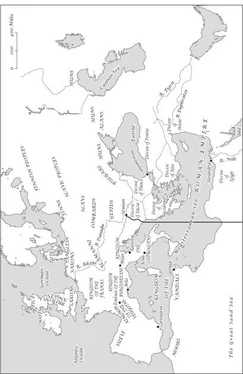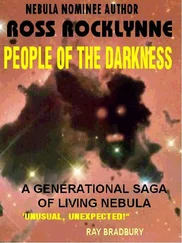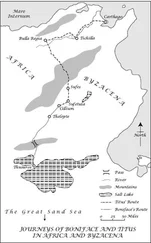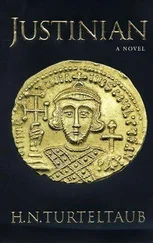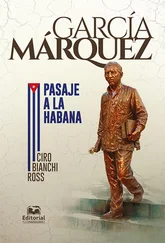Ross Laidlaw - Justinian
Здесь есть возможность читать онлайн «Ross Laidlaw - Justinian» весь текст электронной книги совершенно бесплатно (целиком полную версию без сокращений). В некоторых случаях можно слушать аудио, скачать через торрент в формате fb2 и присутствует краткое содержание. Жанр: Исторические приключения, на английском языке. Описание произведения, (предисловие) а так же отзывы посетителей доступны на портале библиотеки ЛибКат.
- Название:Justinian
- Автор:
- Жанр:
- Год:неизвестен
- ISBN:нет данных
- Рейтинг книги:4 / 5. Голосов: 1
-
Избранное:Добавить в избранное
- Отзывы:
-
Ваша оценка:
- 80
- 1
- 2
- 3
- 4
- 5
Justinian: краткое содержание, описание и аннотация
Предлагаем к чтению аннотацию, описание, краткое содержание или предисловие (зависит от того, что написал сам автор книги «Justinian»). Если вы не нашли необходимую информацию о книге — напишите в комментариях, мы постараемся отыскать её.
Justinian — читать онлайн бесплатно полную книгу (весь текст) целиком
Ниже представлен текст книги, разбитый по страницам. Система сохранения места последней прочитанной страницы, позволяет с удобством читать онлайн бесплатно книгу «Justinian», без необходимости каждый раз заново искать на чём Вы остановились. Поставьте закладку, и сможете в любой момент перейти на страницу, на которой закончили чтение.
Интервал:
Закладка:
There is a terrible Wagnerian grandeur about the fate of the Ostrogoths — a heroic people who first emerge into the light of history, fighting (on the ‘wrong’ side) for Attila in the Battle of the Catalaunian Fields in 451, and vanish from it following the disaster of Busta Gallorum/Tadinae in 552. The ‘Ostrogothic century’ encompasses: first, Volkerwanderung on an epic scale — a search for a homeland throughout the Eastern Empire, followed by mass migration to Italy under their hero-king Theoderic (vice-gerent of the Eastern emperor); then a long and bloody war against Odovacar, king of another Germanic people, the Sciri, to secure their Italian homeland; finally — following a long period of harmonious ‘apartheid’ with the Romans, under Theoderic’s enlightened reign — their extinction as a people, resulting from Justinian’s obsession with reconstructing the Western Empire. (See my Theoderic .)
Theoderic and Totila surely represent all that is best in the Teutonic character — courage and determination in the face of adversity, magnanimity, honour. Confronted by the overwhelming might of Narses’ Roman army at Busta Gallorum, Totila must have known this was the end. Hence, I believe, his amazing war-dance before the battle; at least he and his warriors would go out in a blaze of glory. Surely this scene (which reflects a Teutonic strain of heroic resignation and defiance in the face of certain death) has echoes down the centuries: in Beowulf , in the great Anglo-Saxon war-poem The Battle of Maldon (‘Heart shall be bolder, harder be purpose, more proud the spirit as our power lessens!’), in the last stand of King Harold’s huscarls at Hastings, in the defence of the Alamo.
Chapter 29
the year that witnessed the destruction of the Ostrogoths
Some sources date the introduction of sericulture into the Roman Empire as 552, others as 554. A convenient discrepancy, as it enabled me to have the monks complete the round trip in two years (the usual time), after obtaining the commission from Justinian.
a description. . of our Church of the Holy Wisdom
Paul the Silentiary’s long and detailed work, which elaborates on the coloured marbles, precious stones and gold and silver objects in the building, was indeed recited to the emperor — not in fact in 552 as I’ve suggested, but in 562 at the second dedication of the church.
I would not have that on my conscience
Thus echoing (fictitiously) a sentiment of Vespasian. When it was suggested to that emperor that a special new machine (pulley-system? crane?) be used to convey heavy loads in the construction of the Colosseum, Vespasian declined, saying that its adoption would deprive many poor labourers of their living (which seems to confound the popular notion that the Flavian Amphitheatre was constructed mainly by slave labour).
Gibbon laments a lost opportunity in the failure of the monks to introduce printing to the West, nearly a millennium before Gutenberg: ‘I reflect with some pain that if the importers of silk had introduced the art of printing, already practised by the Chinese, the comedies of Menander and the entire decads of Livy would have been perpetuated in the editions of the sixth century’.
the imposing gateway at the end of China’s Great Wall
Jiayuguan today (a rebuilding of the Ming dynasty) is an imposing spectacle, carefully restored to something like its original splendour. In Justinian’s time, it marked China’s western limit. Since then, a vast new province, Xinjiang, has extended China’s border many hundreds of miles further to the west, taking in the lands of the Uighurs and the Kazaks. These are Turkic people — very different from the Han Chinese in ethnicity, culture, and religion (many being Muslim). Chinese occupation has resulted in considerable friction with the indigenous population, leading to political protest, which the Chinese authorities (displaying their usual horror and intolerance of dissent) invariably put down with harsh severity.
Some sources have the monks smuggling out the silkworm eggs from China itself, others from ‘Chinese-controlled Sogdiana’. Surely the first theory is the more likely. For such an important and jealously guarded state secret as sericulture, would the Chinese have permitted it to be carried on elsewhere than within the Celestial Kingdom itself? Somehow, I doubt it. Moreover, I remain to be convinced that Sogdiana/Bactria was actually ‘controlled’ by China in any meaningful sense; that it came within the Chinese sphere of influence is perhaps the most that can be argued.
a. . species of enormous bear
This is Ursus Torquatus , larger even than the fearsome Kodiak. The sheep mentioned is the species now known as the Marco Polo Sheep.
Chapter 30
this latest theological dogma
‘His [Justinian’s] edict on the incorruptibility of Christ’s body. . is difficult to understand’. (Lucas Van Rompay, Chapter 10, The Cambridge Companion to the Age of Justinian .) The above quotation has to be the understatement to beat all understatements! Aphthartodocetism, in the words of Van Rompay, argued that ‘Christ’s body transcended human corruptibility and was aphthartos [incorruptible], even though Christ of his free will — not out of necessity — submitted himself to corruption and suffering’. Just how Justinian imagined that this impenetrable doctrine (which seems if anything to lean towards Monophysitism) was going to resolve the split between the Chalcedonians and the Monophysites, is hard to see. Robert Browning in his Justinian and Theodora affirms that Justinian ‘had again and again said exactly the opposite in the past’, and goes on to admit that ‘The matter is a mystery and will probably always remain one’. The decree containing the Aphthartodocetist dogma has not survived, but was probably promulgated in 565, a few months before the emperor’s death. It seemed appropriate to introduce the doctrine into the story somewhat earlier than this, as Justinian must have thought about the matter long and hard, before issuing his decree.
bronze equestrian statue of the emperor
This occupied a prominent place in the Augusteum. Although melted down for cannon by the Turks after 1453, we know what it looked like from a drawing made before its disappearance. It is thought to have represented Achilles rather than the Roman general I’ve portrayed in the text.
yet another. . tribe of steppe-nomads
Like the Huns before them and the followers of Genghis Khan after them, another fearsome Mongol horde — the Avars — swept across Europe in the sixth century, establishing a vast empire stretching from France to the Black Sea, while maintaining an uneasy alliance with the Romans. This precarious peace ended in the following century, when the Avars crossed the Danube, overran the Balkans, and nearly captured Constantinople. They introduced the use of stirrups into Europe, thus facilitating the eventual emergence of the heavily armoured mediaeval knight.
His victory against the Kotrigurs
While keeping essentially to the known facts of this bizarre and fascinating interlude, I have, for dramatic reasons, combined its two separate strands into a single event: Belisarius’ tricking Zabergan into thinking his force many times larger than it really was, followed by his luring the Kotrigurs into an ambush and killing four hundred of them; Justinian’s deal with Zabergan, which actually took place a little later, and his subsequent return in triumph to the capital. For a man of sedentary habits in his late seventies to become actively involved in such a Boys’ Own adventure, is truly astonishing.
Читать дальшеИнтервал:
Закладка:
Похожие книги на «Justinian»
Представляем Вашему вниманию похожие книги на «Justinian» списком для выбора. Мы отобрали схожую по названию и смыслу литературу в надежде предоставить читателям больше вариантов отыскать новые, интересные, ещё непрочитанные произведения.
Обсуждение, отзывы о книге «Justinian» и просто собственные мнения читателей. Оставьте ваши комментарии, напишите, что Вы думаете о произведении, его смысле или главных героях. Укажите что конкретно понравилось, а что нет, и почему Вы так считаете.
